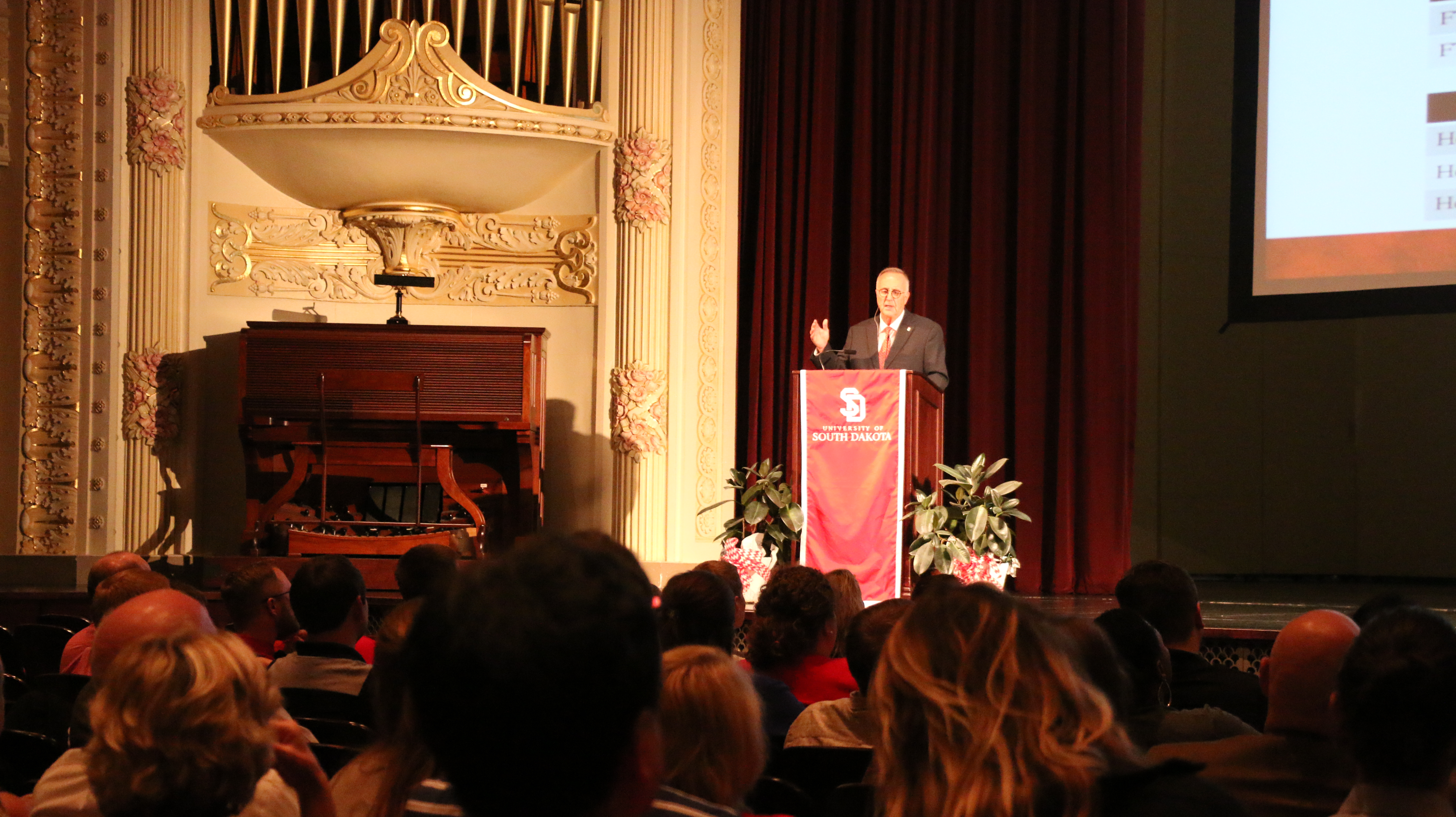
President Abbott gives State of the University Address, addresses diversity
President James Abbott addressed USD faculty on a wide range of topics in his State of the University Address Wednesday.
He remarked that he is “particularly proud of having been president for 20 years.” Some of his best accomplishments have been enrollment and simple campus aesthetic, he said.
One professor in the crowd commented on the appearance of USD’s expansive campus with delight, to which Abbott replied gleefully, “could you say that again?,” which received a laugh.
“How campus looks is important,” Abbott said. “People think we have a great-looking campus.”
Chris Phillips, the USD Procurement Specialist for Facilities Management, agreed with the aesthetic appearance of campus.
“I graduated from USD in 2008 and it is a remarkably better campus than it was then, so Abbott’s done a great job,” Phillips said.
Despite the architectural brilliance of campus buildings, there’s more that makes a university great, Abbott said. One thing that Abbott talked about was diversity and how there needs to be more racial representation on campus.
“We need to be diverse and inclusive,” Abbott said. “Messy numbers show we have some work to do. The total number of minority students is still low, and that must and should be better.”
Abbott’s solution to the problem of little campus diversity is to start reaching out to Sioux Falls students. According to the SDBOR, more than 620 high-achieving Sioux Falls area students didn’t apply to postsecondary education within 16 months of graduating in 2015.
“We need to do better at attracting students from metropolitan areas, especially Sioux Falls,” Abbott said.
He also noted that most Sioux Falls students more have diversity, as the School Board reports that so many students are bilingual or extralingual. There’s also the fact that 30 percent of Sioux Falls high school graduates do not go anywhere for postsecondary education, whether they go right into the job market or make some other plan.
There was also a study done which found that USD students have hardly done enough about having discussions on race, let alone of a different socioeconomic background.
“We clearly have more work to do,” Abbott said. “It comes as no surprise. We have to keep our noses to the grindstone.”
Gabriella Walker, who works in Professional Special Education, said that it’s also hard for international students to feel represented on campus.
“I am international and I saw some international students around, but not too many,” Walker said. “I would like to see more from all over the world.”
Besides issues of diversity on campus, Abbott spoke about the quality of a liberal arts education at USD. Although many people view liberal arts degrees as not as valuable as they used to be, Abbott believes in their quality as a tool through which to gain a better worldview.
“(People say) a liberal arts education will not take you where you want to go, and that is absolutely wrong,” Abbott said.
He also said it takes a few job opportunities to get to where one wants to go in life.
“It’s not the first job or salary that you get (that matters), it’s the last,” Abbott said.
Abbott also bit back at a source that had reported that only one degree would matter in the South Dakota workforce within the next few years: nursing. He said the source mentioned that by 2025, no degrees would be needed to join the workforce for certain jobs.
“USD is doing its part to change that around,” Abbott said.
One of those changes might include new technology at the Discovery District, including Antimicrobial Materials and Luminescent Upconversion Materials.
“(I have) no idea what that is, but it sounds absolutely great,” Abbott said.
